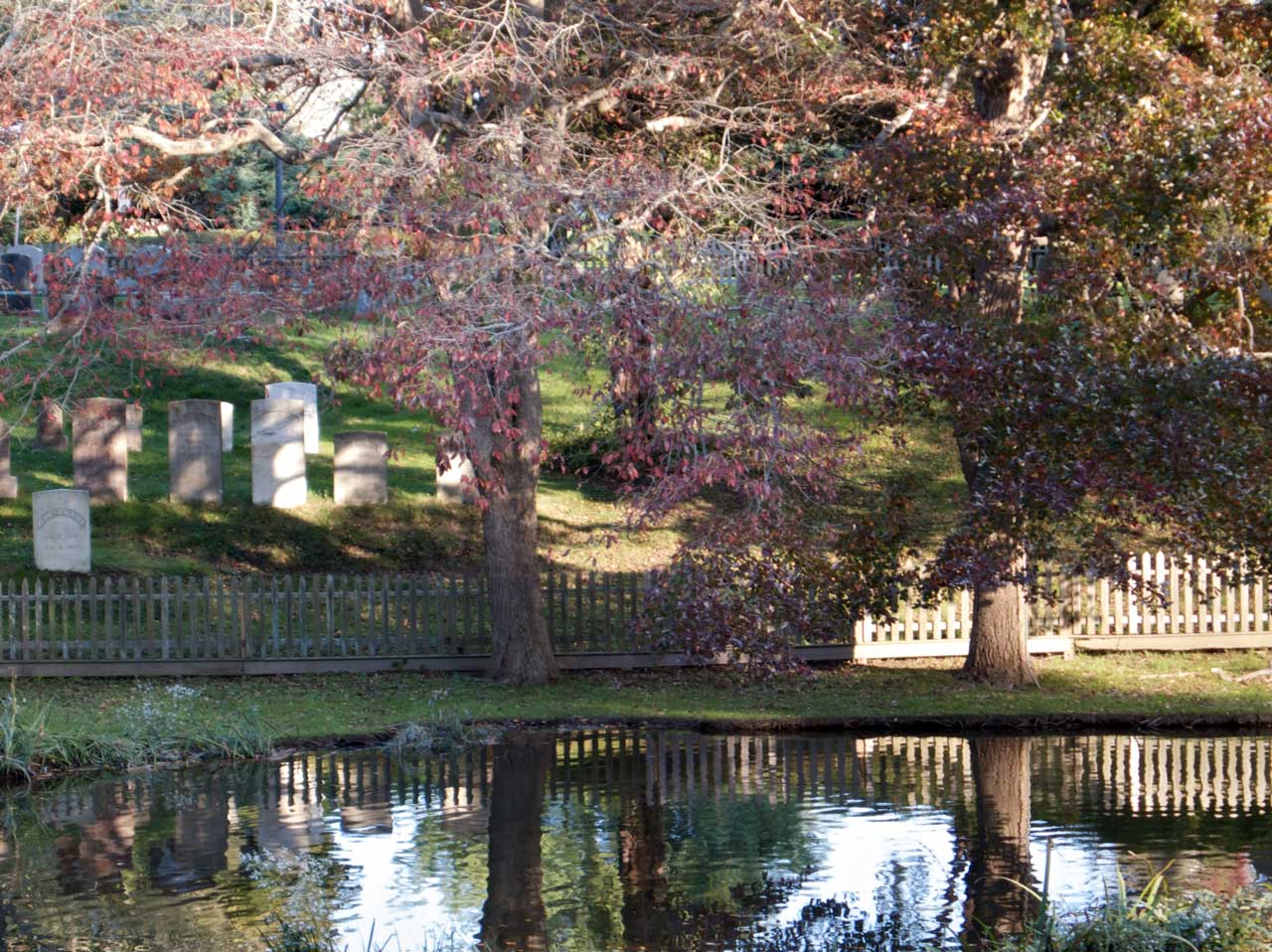
East Hampton Town Pond & South Burying Ground - Autumn
The Hamptons are best known for remarkable beaches, high society happenings, high priced real estate, world-class shopping, restaurants, and art - but did you know what a mecca this is for enthusiasts of Colonial American History?
Come - explore with us - some of the Historical Museums and Landmarks of East Hampton!

Mulford Farm
East Hampton Historical Society - ‘The East Hampton Historical Society serves the residents and visitors of East Hampton by collecting, preserving, presenting and interpreting the material, cultural and economic heritage of the town and its surroundings.’
- Mulford Farm, Circa 1680
- The Mulford Farm, listed on the National Register of Historic Places, is one of America's most significant, intact, English Colonial farmsteads.
- Largely unchanged since 1750, the home has remained in the Mulford hands for the majority of its existence, giving scholars the opportunity to trace the family, their use of the land and structures around them. The lives and spirit of this family echo throughout the house, which was restored using period appropriate furnishings and authentic decorative arts.
- The Mulford Barn, constructed in 1721, is one of the most intact early 18th century English-plan barns in New York State - an outstanding example of early-18th-century construction methods and materials.
- Rachel’s Garden is a recreated 18th century dooryard garden - comprised of plants that were grown by the colonists for medicinal, culinary, dyeing and housekeeping purposes, as well as fresh cut flowers for the home.
- Guests are welcome to walk the grounds of the farm and garden even when the historic buildings are closed.
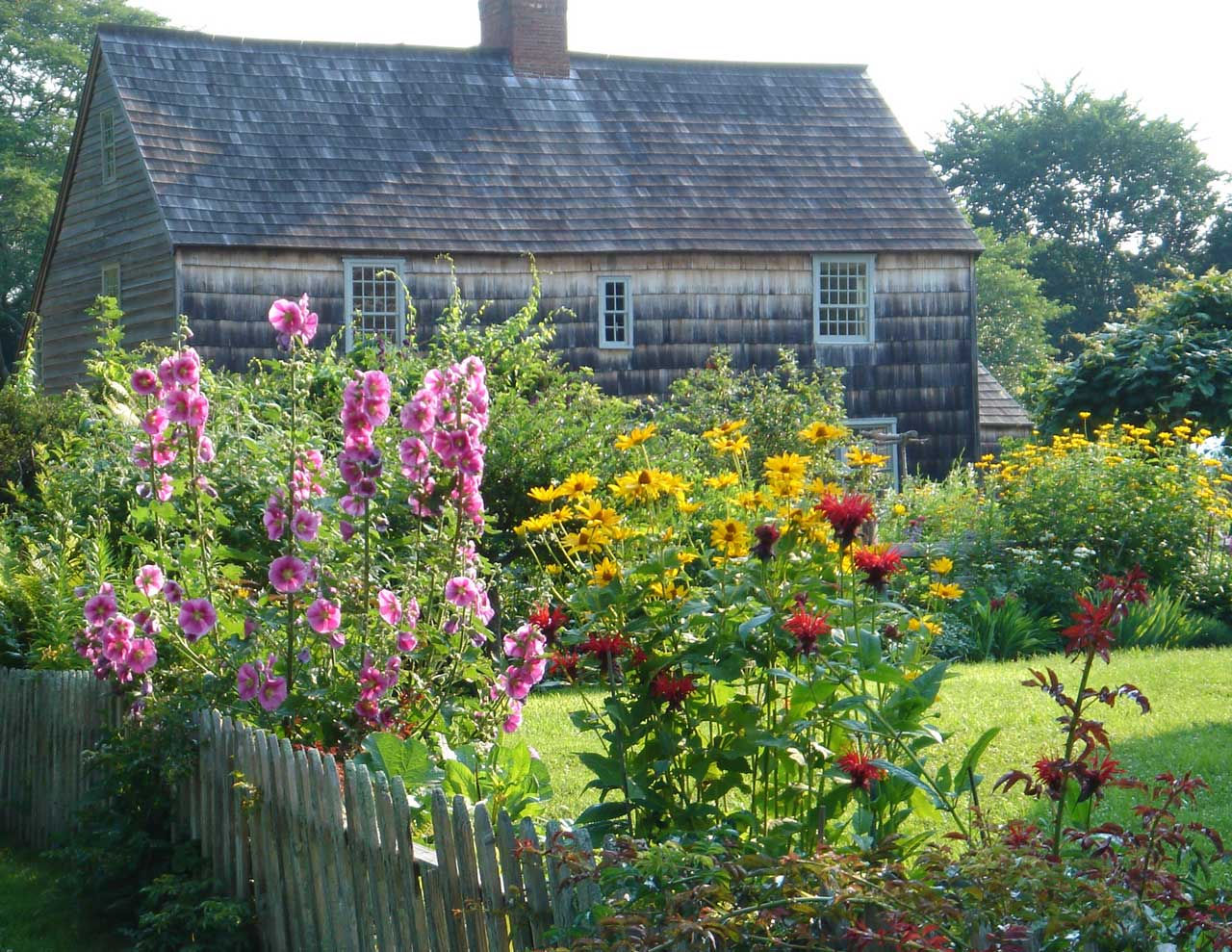
Mulford Farm Gardens In Bloom
- Osborn-Jackson House, Circa 1720
- This Colonial house, one of the few still in its original position on Main Street, serves as the headquarters for the East Hampton Historical Society and a period house museum for the general public.
- The museum features a display of furnishings typical of the well-to-do lifestyle of a post-Colonial East End family. Highlights of the exhibition include a tall clock, a high chest, candle stands, and chairs built in the East Hampton workshop of the Dominy family of craftsmen between 1780 and 1840.

Clinton Academy Historical Museum
- Clinton Academy, 1784
- Clinton Academy was one of the first academies in New York State chartered by the Board of Regents. This remarkable academy was a co-educational institution preparing young men for college or for careers such as seafaring or surveying. Young women were schooled in spiritual reading and the finer points of being a lady. The first headmaster, Reverend Buell, gave instruction in Latin as well as Greek and French. Students came from Long Island, New York City, New Jersey, and Connecticut, as well as from the West Indies.
- Mimi Meehan Native Plant Garden - Behind the Academy, a project of the Garden Club of East Hampton, the garden is accessible during daylight hours.
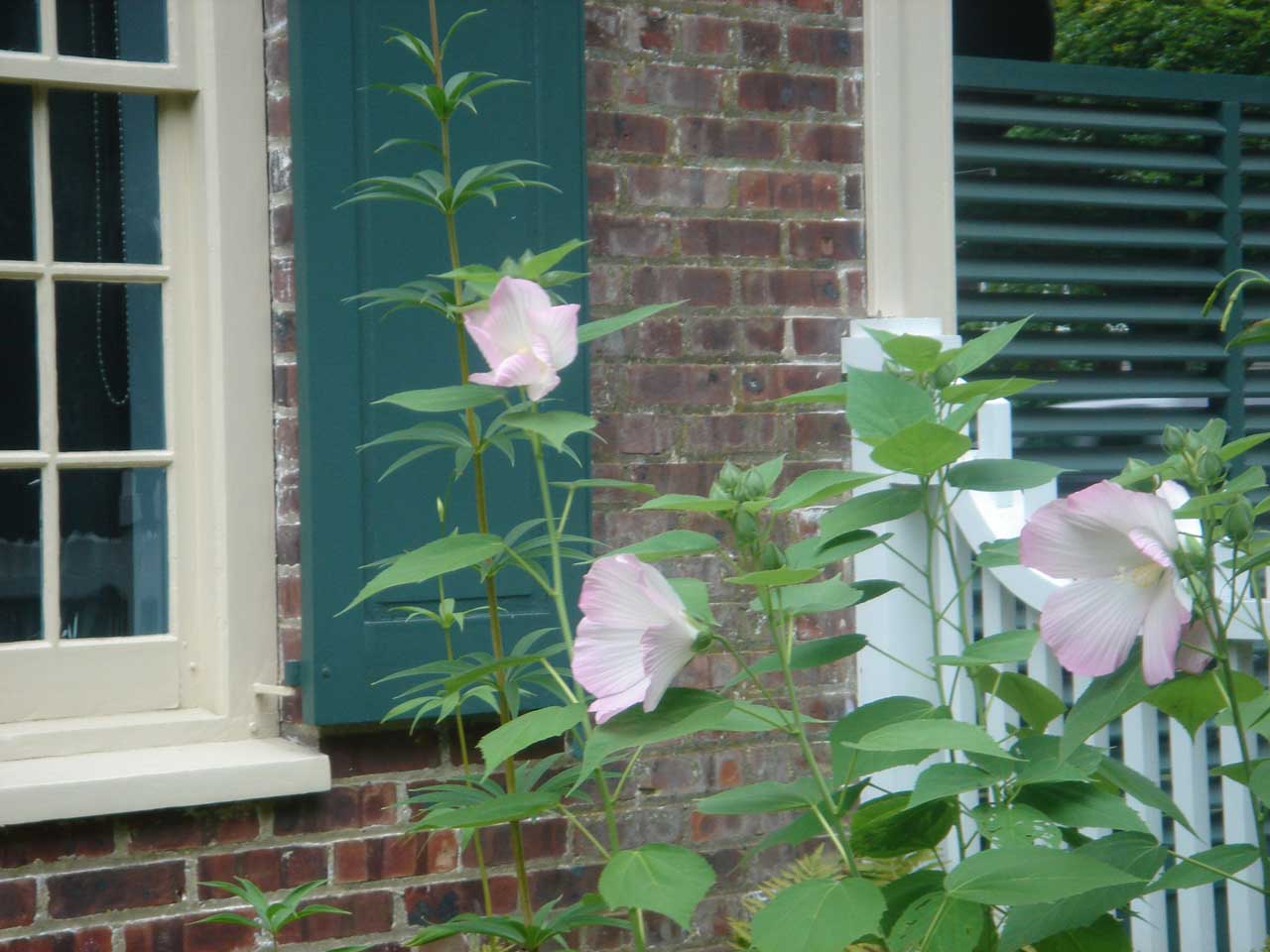
Mimi Meehan Native Plant Garden - Detail of Pink Hibiscus, Brick & Green Shutters
-
- Town House, circa 1785 - The Town House is the earliest surviving one-room schoolhouse on Long Island. Studies were very basic: reading, writing, and enough arithmetic to keep an accounts book. Teachers rarely had a very extensive education and there were virtually no textbooks or paper to use; learning was accomplished by copying on slate. After 1845, the building was used as a meeting place for the Town Trustees, a barbershop, an interior decorator's studio, and the town welfare headquarters during the Depression. In 1958, the East Hampton Historical Society acquired and moved the Town House to a lot adjacent to the Clinton Academy.
- Hook Schoolhouse, circa 1784 - This beautiful tiny Georgian designed frame building has been moved about East Hampton Village since it was built. Rediscovered several years ago on North Main Street, this building may have been a school, private library, or lawyer’s office. Quite elegant in detail and proportion, it was saved from destruction and situated behind the Town House. It has been restored to reflect mid-18th-century hornbook schooling as well as an unusual desk arrangement that is described in early town records.
- Thomas & Mary Nimmo Moran Studio, Circa 1884
- In 1884, the Morans built the first artist's studio in East Hampton, NY, which marked the beginning of the village as an artist's colony. Recently renovated, the Thomas & Mary Nimmo Moran Studio is a National Historic Landmark - described as "a quirky, Queen Anne style-studio cottage."
- Newsday (2018): Thomas and Mary Nimmo Moran Studio to Open in East Hampton
- The Independent (2018): Thomas Moran House Opens After Renovation
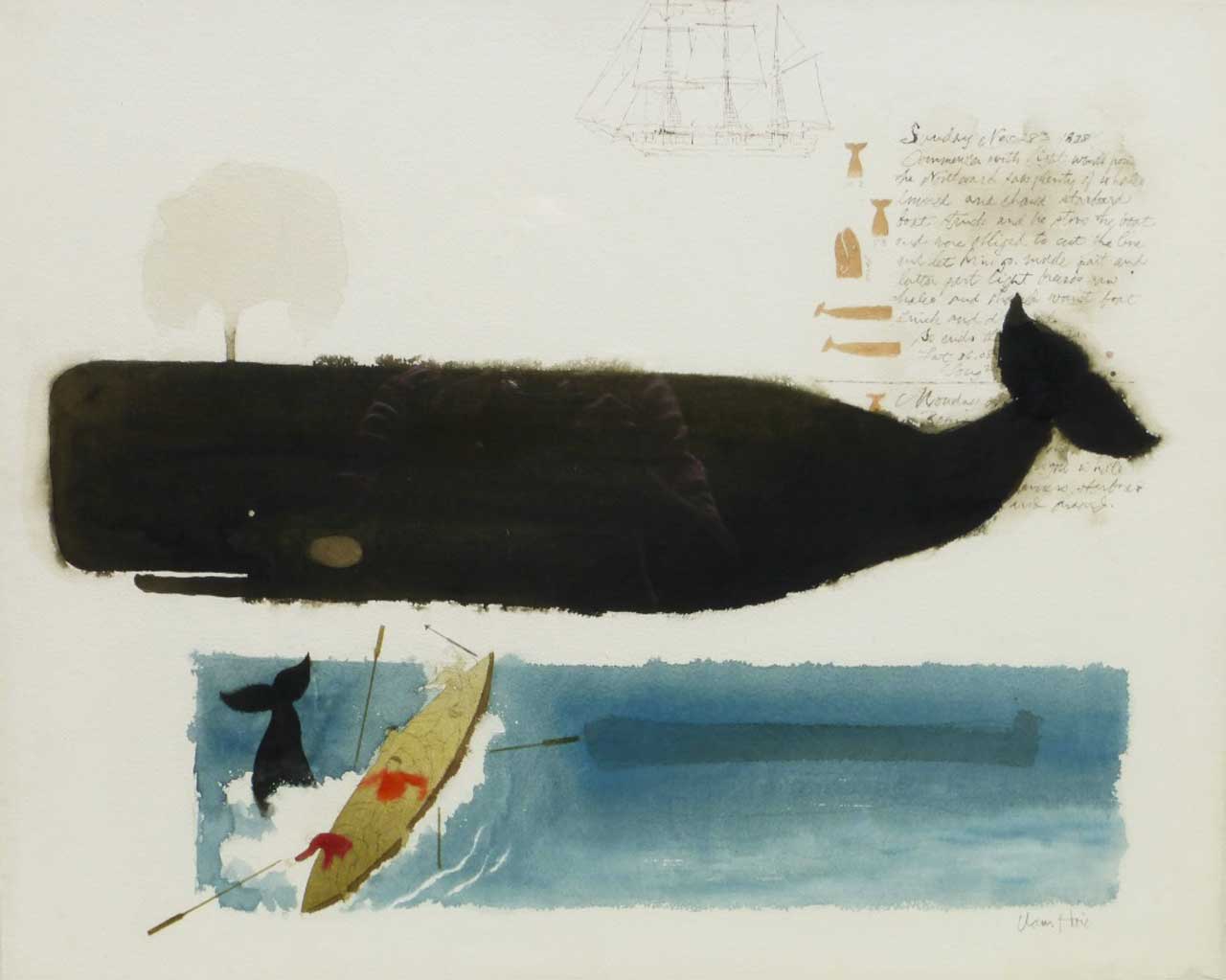
Claus Hoie Whale Print at the East Hampton Town Marine Museum
- East Hampton Town Marine Museum, 1942 - Amagansett
-
- The Marine Museum is dedicated to documenting and preserving East Hampton Town's maritime history and showing how the marine environment has had an impact on the economic, social, and recreational life of its citizens. With three floors of artifacts, photographs, models, and displays, the museum tells the unique story of Long Island's East End community and its relationship with the sea.
- The new Claus Hoie Gallery of Whaling is a permanent exhibition of paintings by Claus Hoie, an East Hampton painter, depicting the story of a 19th-century whaling expedition that set sail from Sag Harbor.

East Hampton Antiques & Design Show
- East Hampton Antiques & Design Show
- The premier show of it’s kind on the East End, featuring antiques and decorative items for home and garden - this is an annual summer tradition. All weekend, visitors can shop at over 60 dealers selling antiques, art, jewelry, and collectibles, while exploring the site of the 17th century Mulford Farm.
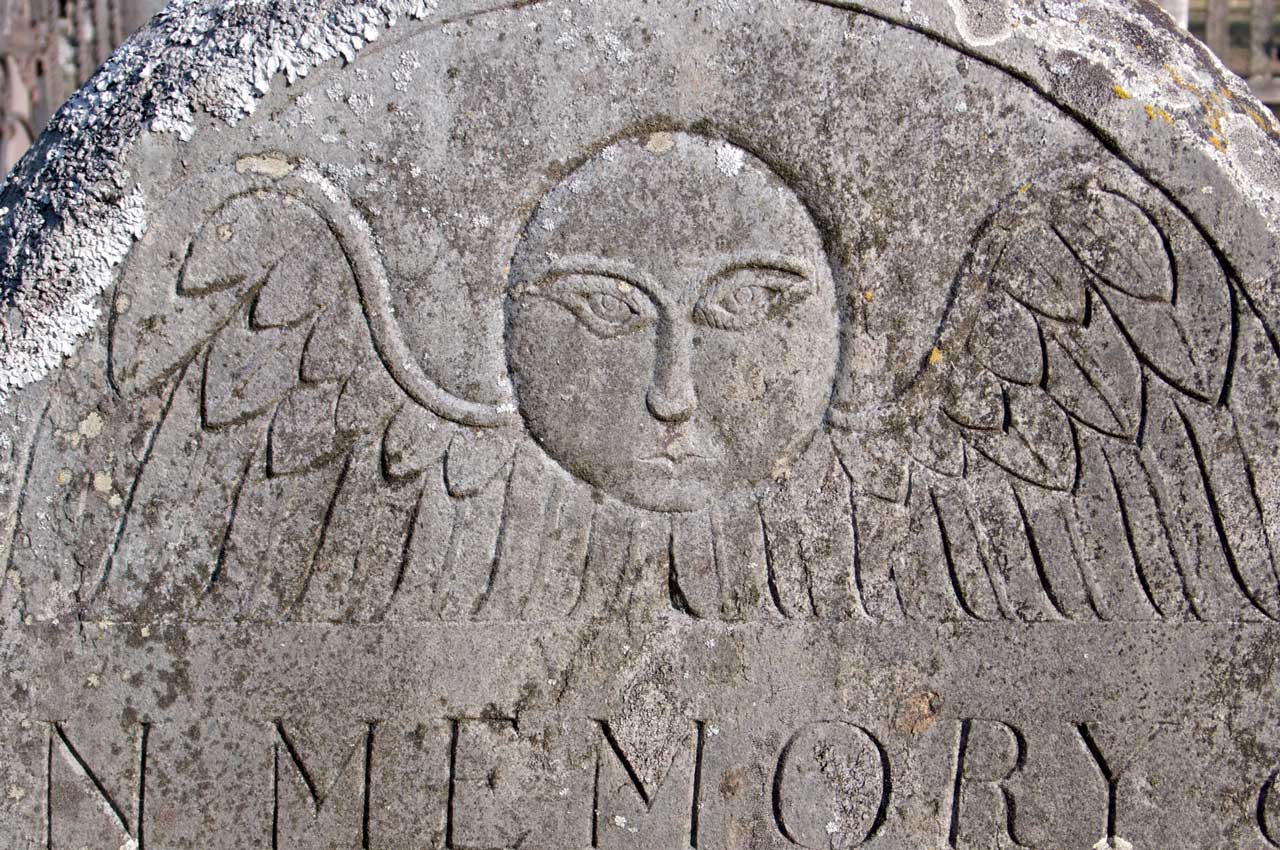
East Hampton Village South End Burying Ground - Detail of Gravestone
The Historic Preservation and Historic Districts of East Hampton Village: East Hampton Village has a long history of preservation and maintains a number of historic properties including the Gardiner Home Lot, Home Sweet Home, three Windmills, the South End Burying Ground, the North End Burying Ground, and the village greens. And what other village that you know of maintains a Town Crier in the 21st Century?
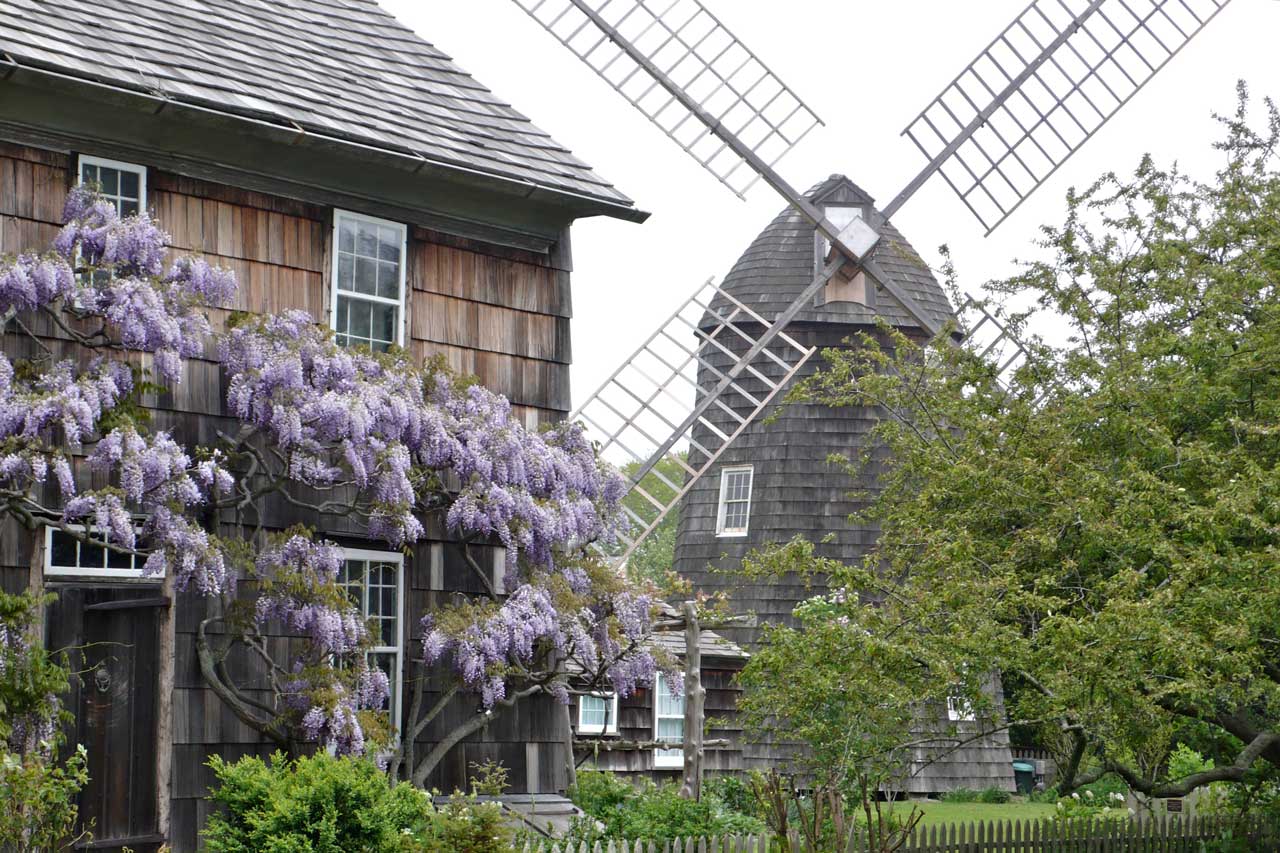
Home Sweet Home with Wisteria and Windmill
- Home Sweet Home, Circa 1720,
- "Home, Sweet Home" on James Lane was built in the early 1700's and is the most distinguished lean-to or "saltbox" in East Hampton. (N.B.: The Mill House Inn was originally built as a saltbox in 1790 - until it’s first major renovation in 1896 when the roof was raised to a gambrell!) It is a vivid reminder of what homes were like in the early English settlement. The home was lived in by relatives of John Howard Payne, the composer of the lyrics to the popular song, "Home Sweet Home" and may have been the inspiration for his song.
‘Mid pleasures and palaces, though we may roam,
Be it ever so humble, there's no place like home.
A charm from the sky seems to hallow us there,
Which, seek through the world, is ne'er met with elsewhere.
Home! sweet home!
There's no place like home!
An exile from home, splendour dazzles in vain!
Oh! give me my lovely thatch'd cottage again!
The birds singing gaily that came at my call,
Give me them, with the peace of mind dearer than all!
Home! sweet home!
There's no place like home!
-
- It is now a Village museum open daily May through September or by appointment. (631-324-0713)
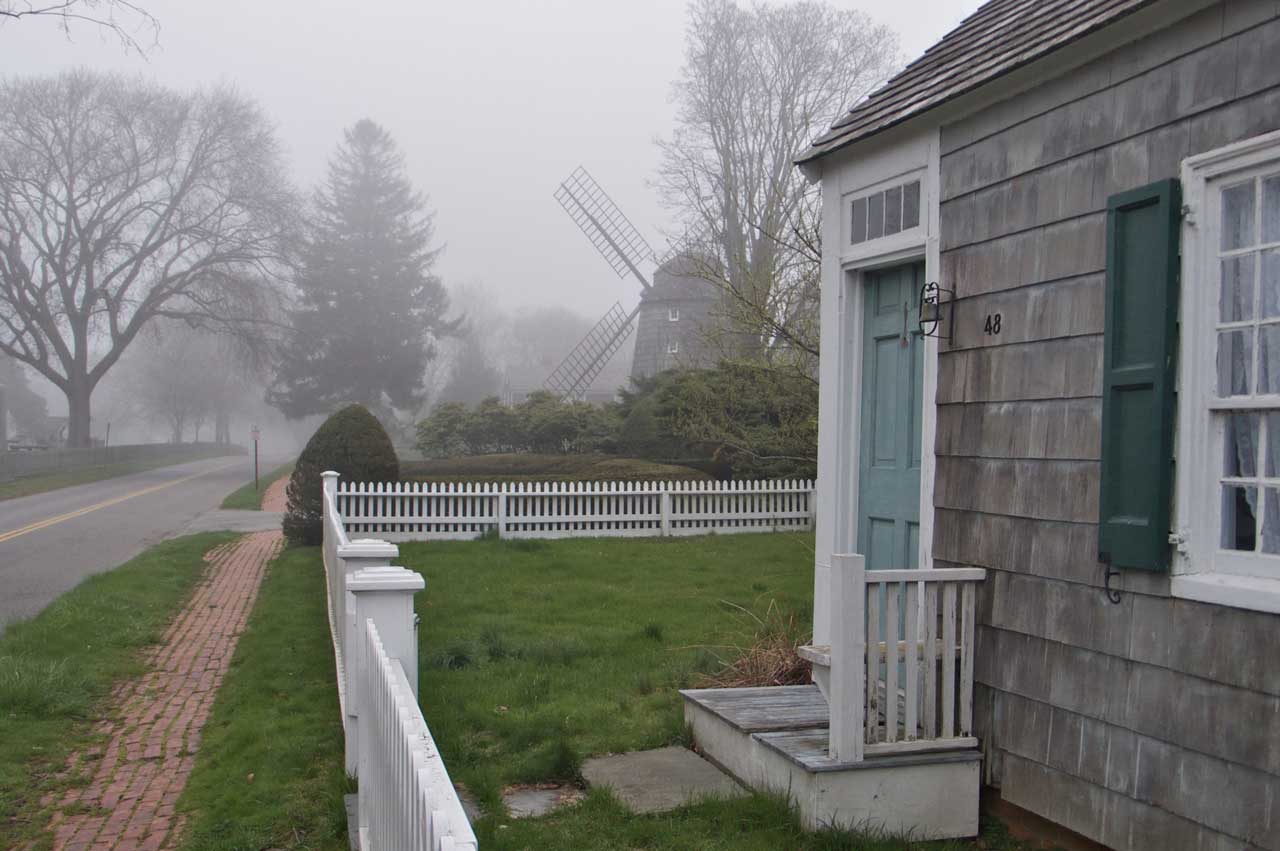
Gardiner Home Lot - Small House and Windmill
- Gardiner Home Lot, Circa 1750, 36 James Lane
- Purchased by East Hampton Village in 2014, The Gardiner Home Lot consists of 3.7 acres in the center of the village, with two historic houses and a windmill.
- ‘Wait, so what is a "home lot," anyway? The founders of East Hampton purchased the land for the village from the Montaukets (who were paid twenty coats; twenty-four of each of the following: hatchets, hoes, knives, and mirrors; and one hundred small metal drills, which they could use to drill wampum). Each founding family received a home lot of several acres of land right in the village. There were also common fields farther away: pasturing, arable land, and woodlots for fuel. This house lot was owned by Lion Gardiner, who also claimed Gardiner's Island as a manor. And it has been owned by Gardiners ever since.’ (Curbed Hamptons) - That is, until the Village purchased it for significantly more - using $9.625 Million from the Community Preservation Fund!

Old Hook Mill Drawings - Library of Congress
- East Hampton Historic Windmills: The Village of East Hampton is the only municipality in the country to maintain three historic windmills. These windmills recall the English roots and agrarian character of our early community. Today the windmills symbolize our history and the special qualities of our historic buildings and their setting.
- Old Hook Mill: Across the street from the Mill House Inn on North Main Street, this windmill was built by Nathanial Dominy V in 1806. Open to the public (631-324-0713)
- Pantigo Windmill (1804) - Also built by Nathanial Dominy, this is the third windmill to occupy this site on Mulford Farm. 14 James Lane, East Hampton Village
- Gardiner Windmill (1804) the third Nathaniel Dominy V Windmill owned by East Hampton Village on the Gardiner Home Lot. 36 James Lane, East Hampton Village
- Patch East Hampton (2012): Newly Restored Hook Mill Reopens Friday
- The Windmills of Long Island by Robert J. Hefner (W.W.Norton) 1984
- The New York Times (1997): Windmills From Eras Past Instill a Sense of Tradition
- Sag Harbor Express (2014): A Long History of Wind Power in East Hampton
- The New York Times (1993): Dominy Woodworking Enjoys a Family Gathering
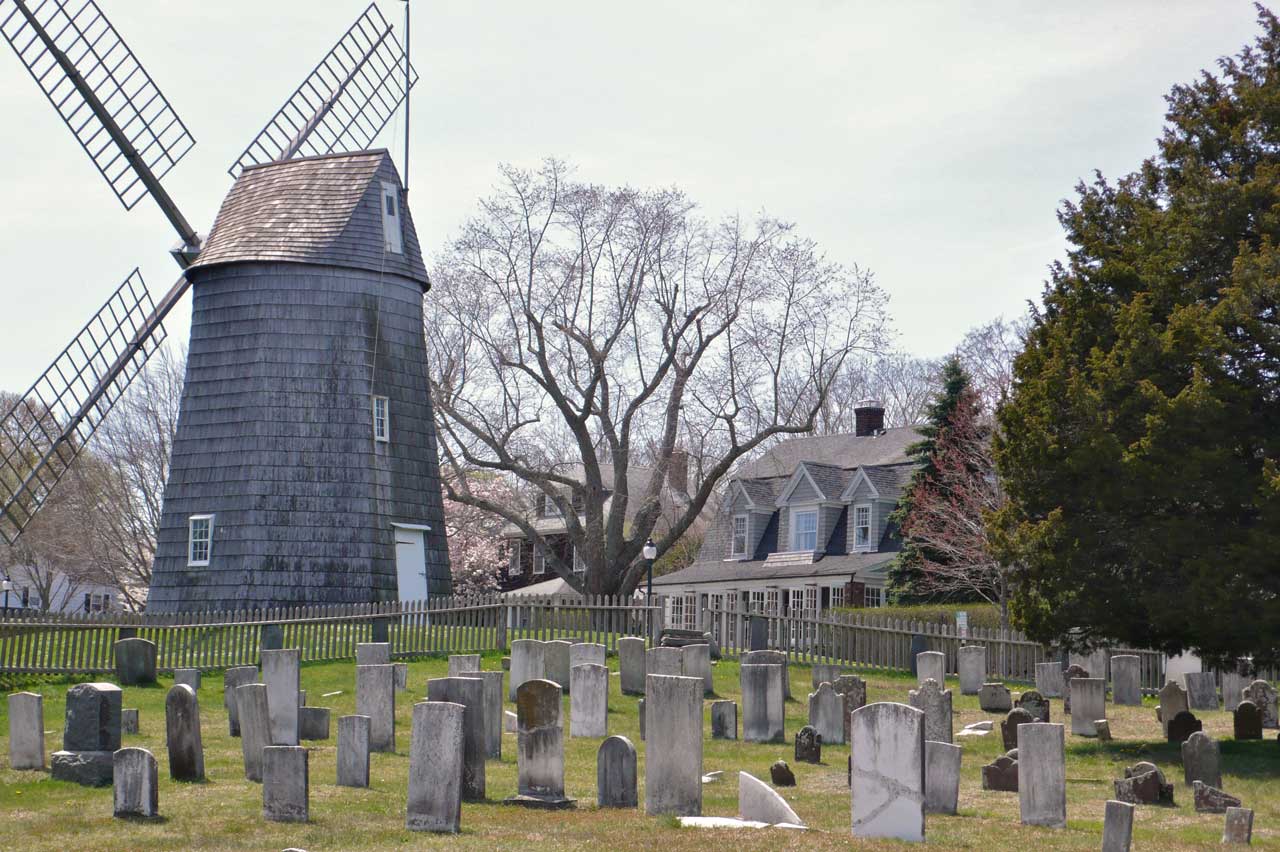
Old Hook Mill, North End Burying Ground & Mill House Inn - Early Spring
There's more History to explore in Springs, Amagansett, Montauk & Sag Harbor next time!
See you soon,
Sylvia










